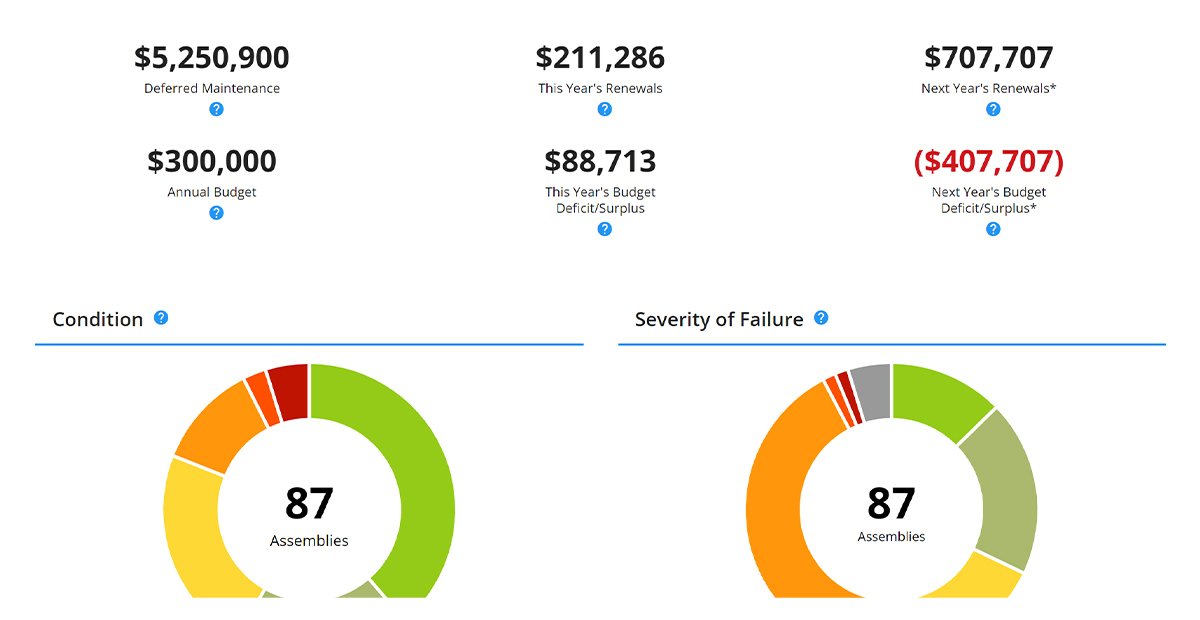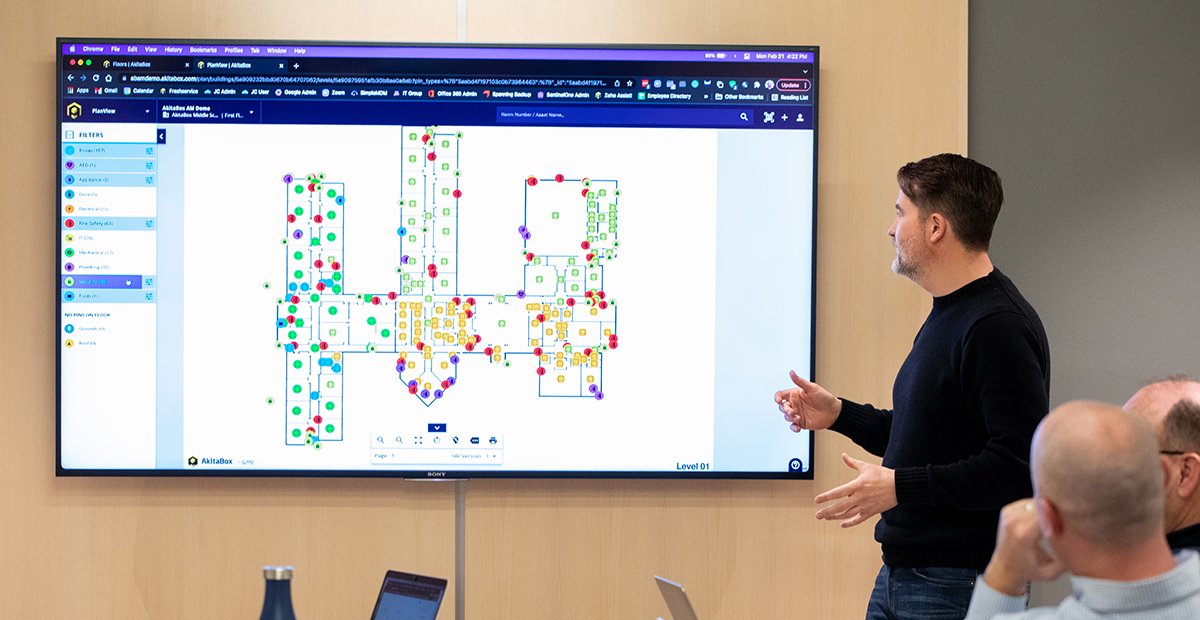The Higher Ed Facilities-Finance Connection: How Accurate Facilities Data Helps Win Over Finance and Secure More Budget
Money is tight. It doesn’t matter if you’re a public institution, private college, technical school, or community college. Inflation, declining enrollment, aging infrastructure, and a host of other issues are steadily shrinking school budgets.
Facilities teams are especially feeling the pinch. Higher ed operating budgets have plummeted 9 percent since 2019. Facilities investment shortfall to anticipated demands is approaching 40 percent, meaning facilities departments are left with only about 60 percent of the funds they need.
If you want a bigger piece of a smaller budget pie, you’d better come with receipts. A spreadsheet of numbers based on iffy data and guesswork isn’t going to convince the finance gurus at your campus to hand over more dough. Getting the budget you need requires:
- Accurate facilities data specific to your campus
- Clear priorities of what costs must be kept and which can be cut (and the ramifications)
- A professional, persuasive, and easy-to-understand way to present your budget to the decision makers
Keep reading to learn how to build and present a data-driven facilities budget that’ll increase your chances of getting funding to properly steward your campus.
Why Accurate Facilities Data is Essential for Higher Ed Budgeting
Building a rock solid budget you can feel confident about begins with knowing the actual condition of your facilities. Trouble is, for many facilities teams, that information is unavailable or inaccessible, due to:
- Siloed information that’s not housed in one accessible place
- Necessary information not being tracked consistently
- Outdated facility condition assessments (FCAs) that aren’t kept current over time
- Complicated paper-based or legacy systems that aren’t easy to search and may contain mistakes
So in reality, you end up sorting through old FCA reports, work orders, repair statuses, warranties, and other information to come up with something resembling a general picture of your facilities today. You rely on input from your technicians and educated guesses to fill in any blanks.
After all that work, you have a hazy data set that probably won’t stand up to much scrutiny from the finance folks. Not only that, this inaccurate information doesn’t give you the insights needed to create a budget that includes what your facilities actually need.
You need better data if you want to build a stronger budget.

Good Data’s Impact on Higher Ed Facilities Budgeting
Smart deferments
Higher ed facilities face an estimated $112 billion in urgent deferred maintenance needs. These unaddressed issues can impact your school’s ability to recruit students and attract faculty.
Knowing the current stamina of your equipment means you know what items you can safely defer and which ones you can’t. This greatly reduces the chances of being blindsided by unexpected breakdowns requiring pricey emergency repairs or total replacement.
Basing your deferments on precise facilities data makes it more obvious which less vital issues can be delayed and spotlights the most important concerns that need to be addressed – whether for safety, compliance, or student satisfaction reasons.
Properly timed asset replacement
Once an asset exceeds its useful lifespan, it’s more expensive to maintain it than replace it. Accurate facilities data shows when an asset will reach the end of its life so you can budget for a replacement. You can also more easily identify assets that are already past end of life and are slowly bleeding capital reserves dry thanks to their more expensive maintenance needs.
Correct prioritization
You probably won’t get all the budget dollars you ask for. Thankfully, complete, accurate facilities data makes it much easier to prioritize your budget requests. If you’re asked to reduce your budget request by 20 percent, you’ll already know which things can be dropped without endangering campus safety and student satisfaction.
Establishing a priority system for facilities projects helps your team stay focused on long-term goals and keeps your priorities consistent from budget to budget. A priority list could look something like this:
- Fulfill requirements to meet all regulatory, legal, and safety compliance
- Fulfill requirements to protect the institution’s financial integrity
- Completion of ongoing projects
- Maintenance or replacement of worn out equipment
- Other projects
No more starting from scratch
Without an always-current view of facility conditions, you’re forced to reassess your capital allocation with every budget cycle. Starting your budget planning from square one every year consumes huge amounts of time.
When you have access to facility data that’s up-to-the-minute accurate, there’s no need to build a budget from nothing. You already have all the current facility condition data you need to determine where to spend (and not spend).
“Well that’s great,” I can hear you thinking. “But just how am I supposed to get all of this accurate facilities data? My current data is a mess.”
It is possible to get there. You just need the right tools.
Leveraging Software for Better Data and Budgeting
Facilities management (FM) software and capital management (CM) software work together to deliver data-driven budgets.
FM software tracks, collects, organizes, and shares accurate, up-to-date facilities information. It pulls together multiple data streams (maintenance activities, asset conditions, etc.) to give you a clear picture of your overall situation.
Taking all of that information one step further, CM software uses your facilities data to help you identify key areas for investment, prioritize spending needs, and run various budget scenarios.
For example, AkitaBox capital management software enables you to understand and then convey to campus leadership the cost, risk, consequence, and priority of each item in your facilities budget.
Cost: See the total cost of major repairs and replacements each year. View a line-by-line breakdown of each year’s major costs.
Risk: Show why a particular cost should be prioritized by linking the condition to the severity of failure. For example, updating the air filtration system in your college’s prestigious biomedical engineering lab needs to be done this year. That’s because it is approaching its end of life (which you know thanks to your accurate facility condition data) and because when it fails, it will put the lab out of commission – damaging important research, hurting your school’s reputation, and incurring heavy costs. Updating it now before it fails will not only save money, but prevent a public relations nightmare.
Consequence: As mentioned earlier, colleges everywhere are staggering under the weight of growing maintenance backlogs. You can use AkitaBox CM software to illustrate the growing costs of accumulating deferrals and develop a strategy for gradually chipping away at your university’s backlog. It’s also useful for highlighting the importance of including more preventive maintenance in your facilities budget so you can keep your existing assets running well all the way through their end of life.
Priority: When you run into the inevitable situation where your costs exceed available capital, use AkitaBox to compare buildings across your entire facility portfolio and view their condition vs. mission criticality. Look at the deferred maintenance issues that need addressing and, using insights from your CM software, prioritize the ones that have the greatest potential to cause catastrophe.
Imagine the power of having all this at your disposal. With FM and CM software (and the data they contain), you can:
- Create more exact facilities budgets
- Justify every item in your budget with accurate data
- Illustrate the costs and risks of deferring capital purchases and projects
- Give data-backed input to your leadership and finance
- Serve as a trusted resource for any facilities-related questions

Deliver a Data-Driven Budget to Campus Leadership
Now for the most important part – presenting your facilities budget to the campus decision makers.
Typically, the powers that be will assume you’ve asked for more than you need and will cut your request accordingly. Without accurate data to back up the budget and no way of seeing the urgency of specific requests, they view it as nothing more than just another line item.
Coming prepared with data specific to your unique campus brings your budget to life for people who don’t live and breathe facilities every day like you do. Leveraging FM and CM software lets you visually showcase the “why” behind your budget requests and tell the story of your facilities’ needs.
Dependable data plus the right software tools is a one-two punch for knocking out your next budget request:
Show how your budget aligns with the strategic priorities of the institution. Whether your college is focused on improving student housing or stepping up their research game, explain how your budget items will directly support those goals.
Present easy-to-understand visual illustrations of your budget. Pie charts, bar graphs, and tables are the native language of finance people. With CM software, you can highlight various aspects of your facilities budget using professional-looking graphics, reports, and predictive models. Want to convey what your current deferred maintenance backlog looks like? There’s a visual for that. It’s a great way to bridge the divide between how facilities and finance communicate.

Explain the risks of saying no to any particular line item. Instead of just taking “no” for an answer, you can encourage additional discussion by showing campus leaders what that “no” actually means for your facilities. Leverage the visual reporting in your CM software to highlight what spending more or less on a particular issue will result in. Outline the pros and cons of a “no” decision to ensure everyone at the table is making an informed choice.
Accurate facilities data (and the ability to meaningfully showcase it) can help you bring finance on board with your needs and vision – and help your campus administration make data-backed decisions regarding your budget.
Download our free ebook to learn even more about accurate and effective capital planning in higher education.

